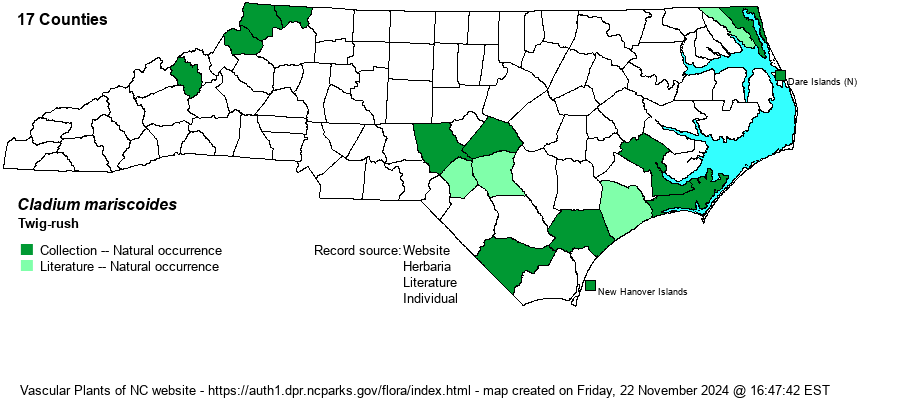| Author | (Muhlenberg) Torrey | |
| Distribution | In 4 disjunct areas: northern Mountains, Sandhills, and southern outer Coastal Plain and northern outer Coastal Plain.
Newf. to Sask. south as scattered occurrences to GA, northwestern FL, southern MS, and eastern TX. | |
| Abundance | Rare in the northern Mountains and in the Sandhills; uncommon in the outer Coastal Plain. Usually occurs as large populations. The NCNHP moved the species from Significantly Rare to Watch List in 2021. | |
| Habitat | Shallow water of impoundments, reservoirs, beaver ponds, depression ponds, montane seepage areas, montane fens. In some areas, such as the Sandhills, it is found in strongly acidic soils, but in other places it favors alkaline conditions, such as in some montane fens and in some coastal marshes. |
| Phenology | Flowering and fruiting July-September. | |
| Identification | This sedge looks most like a very tall Juncus [rush], as the culms and leaves are rounded or rather involute. But Juncus flowers all possess 6 sepal-like flower segments, whereas Cladium does not. In the field, Cladium mariscoides does not look at all like C. jamaicense. | |
| Taxonomic Comments | None (surprisingly), though the highly fragmented range and disjunct populations are quite odd and worthy of further study.
| |
| Other Common Name(s) | Smooth Sawgrass, Fin-sedge. More references call this as Smooth Sawgrass, but that name causes some confusion with C. jamaicense, usually known as just Sawgrass. As it is so different from that species, also seemingly in separate genera, Twig-rush is used by enough entities to be adopted here. | |
| State Rank | S3 | |
| Global Rank | G5 | |
| State Status | W1 | |
| US Status | | |
| USACE-agcp | OBL link |
| USACE-emp | OBL link |

